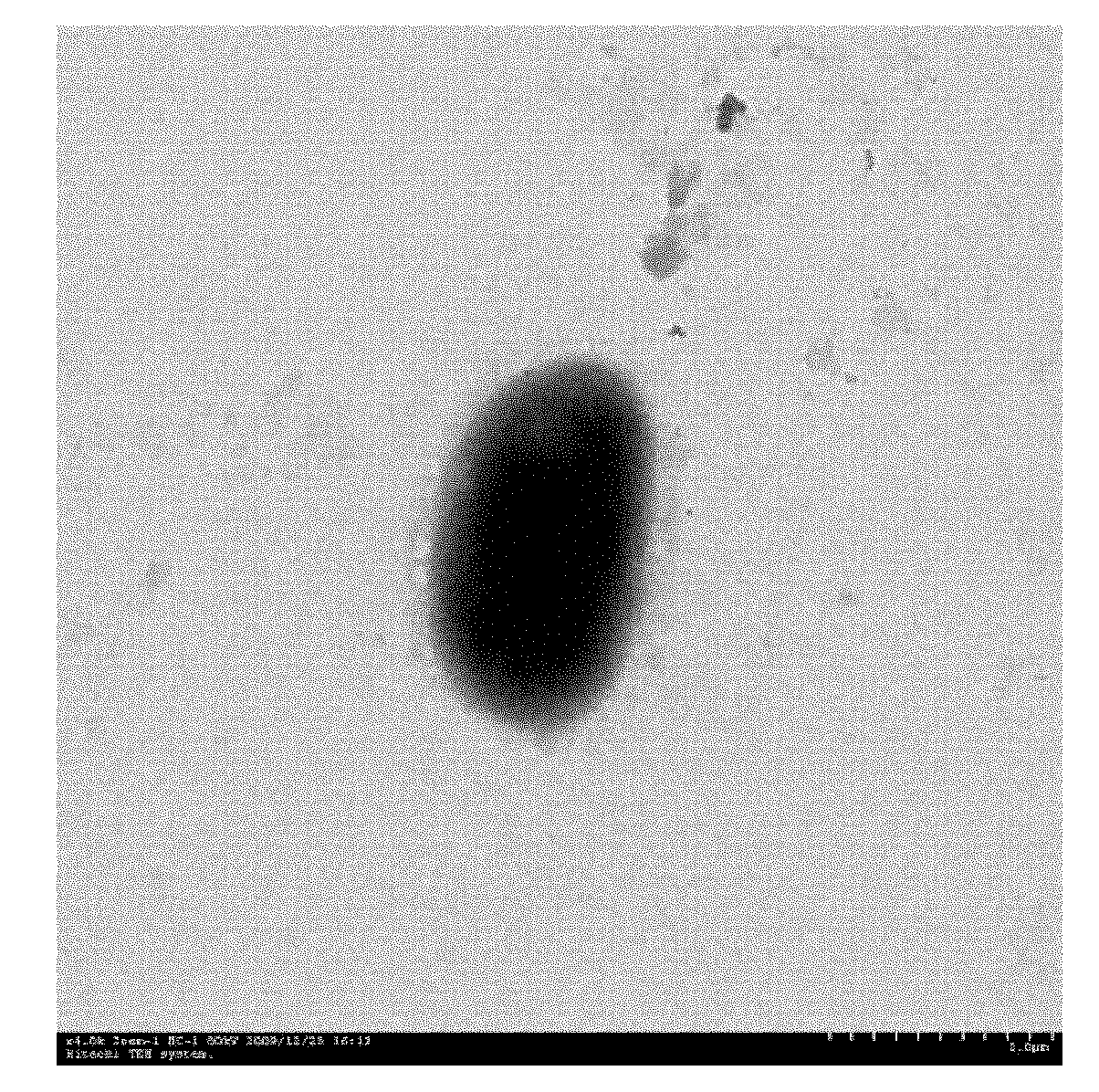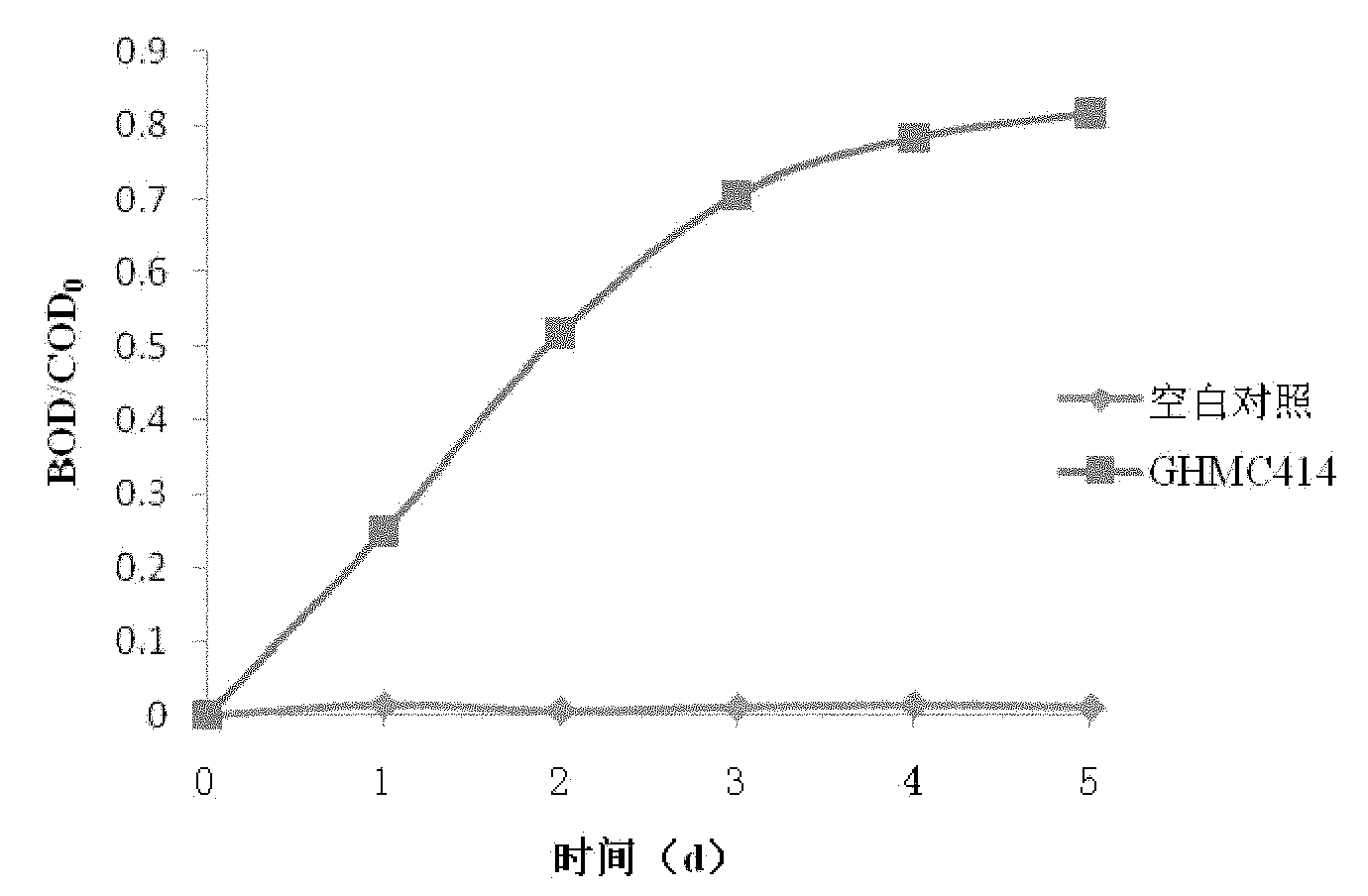Marine organic matter degradation Halomonas sp. strain GHMC414 and application thereof
A technology of GHMC414 and Halomonas, which is applied to the marine organic matter degrading Halomonas strain and its application in the treatment of organic matter-polluted seawater, can solve the problems of secondary pollution, low efficiency of physical methods and high cost, and achieve strong The effect of degradability
- Summary
- Abstract
- Description
- Claims
- Application Information
AI Technical Summary
Problems solved by technology
Method used
Image
Examples
Embodiment 1
[0018] The screening method of embodiment 1 seawater organic matter degrading bacterial strain:
[0019] 1. Material preparation
[0020] 1. Bacterial source and experimental wastewater
[0021] (1) The source of the bacteria is the sediment of the Shenzhen Dapengao seawater fish cage farm area with a breeding history of more than 20 years.
[0022] (2) Experimental wastewater (sea water containing high-concentration bait organic matter): 5 g of minced fish, 1000 mL of aged sea water, pH 7.6-8.2, sterilized at 121°C for 20 min.
[0023] 2. Medium
[0024] (1) Selection medium: 20g minced fish, 1000mL aged sea water, pH 7.6-8.2, sterilized at 121°C for 20min.
[0025] (2) Separation and slant medium: peptone 5g, yeast extract 1g, ferric phosphate 0.1g, agar powder 20g, aged sea water 1000mL, pH 7.6-8.2.
[0026] (3) Activated expansion medium: peptone 5g, yeast extract 1g, ferric phosphate 0.1g, aged seawater 1000mL, pH 7.6-8.2.
[0027] 3. Experimental instruments and equ...
Embodiment 2
[0049] Example 2 Identification of Marine Organic Matter Degrading Strain GHMC414
[0050] 1. Identification of marine organic matter degradation strain GHMC414
[0051] Physiological and biochemical identification and 16S rDNA molecular identification were carried out on the marine organic matter degradation strain GHMC414, and the species of the strain was determined from the molecular level, combined with the analysis of bacterial morphological characteristics and physiological and biochemical characteristics.
[0052] 16S rDNA sequence analysis mainly follows the following steps:
[0053] ① Extraction of bacterial nuclear DNA:
[0054] 1) Use an autoclaved toothpick to pick a single colony and inoculate it in the expansion medium for overnight culture. Take 1.5 mL of the bacterial solution into an Eppendorf tube, centrifuge at 8000 rpm for 5 min at room temperature, and remove the supernatant completely.
[0055] 2) Add 1.5 mL of STE buffer to wash once, centrifuge to di...
Embodiment 3
[0099] Example 3 Colony morphology, physiological and biochemical characteristics of marine organic matter degradation strain GHMC414
[0100] See Table 1-1 for the colony morphology, physiological and biochemical characteristics of the marine organic matter-degrading strain GHMC414; see Table 1-1 for the cell morphology figure 1 .
[0101] Table 1-1 Colony morphological characteristics and main physiological and biochemical characteristics of marine organic matter degradation strain GHMC414
[0102]
[0103] Note: "+": more than 90% of the strains are positive, "-": more than 90% of the strains are negative.
PUM
 Login to View More
Login to View More Abstract
Description
Claims
Application Information
 Login to View More
Login to View More - R&D
- Intellectual Property
- Life Sciences
- Materials
- Tech Scout
- Unparalleled Data Quality
- Higher Quality Content
- 60% Fewer Hallucinations
Browse by: Latest US Patents, China's latest patents, Technical Efficacy Thesaurus, Application Domain, Technology Topic, Popular Technical Reports.
© 2025 PatSnap. All rights reserved.Legal|Privacy policy|Modern Slavery Act Transparency Statement|Sitemap|About US| Contact US: help@patsnap.com



